New Builds, Remodels, & Additions: Call Us for a Home Transformation!
Request ConsultationTermites in Louisiana: The Good, the Bad, and the Ugly

Welcome, fellow Louisiana residents, to the fascinating yet sometimes terrifying world of termites! If you live in the Bayou State, you've probably heard a thing or two about these critters, and you might even have some unpleasant first-hand experiences with them. Don't worry, though - we've got your back! In this post, we'll dive into the mysterious world of termites in Louisiana, explore how they can invade your home, and offer some preventative maintenance measures. Plus, we'll discuss what to do if you find termites in your home and how to look for the right professional. Finally, we'll answer the million-dollar question: does insurance in Louisiana cover termite damage?
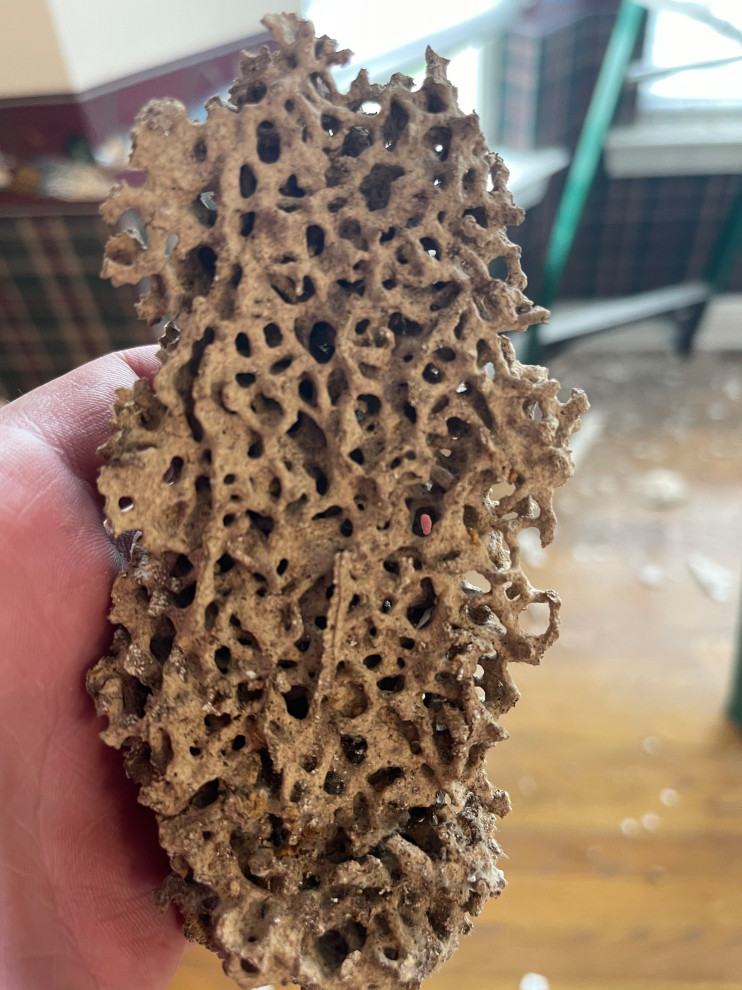
1. The Great Infiltration: How Termites Get into Your Home (Expanded)
Termites are sneaky little creatures, and they have a knack for finding ways into your home. Here are some of the most common entry points and additional details on how termites exploit them:
- Cracks in the foundation: Termites love exploiting small cracks or gaps in your home's foundation to gain access. They can travel through these tiny openings and enter your home's interior, where they can start feasting on wood. To prevent this, inspect your foundation regularly for any signs of cracks or gaps and seal them promptly.
- Wood-to-soil contact: If any part of your home's wooden structure is in direct contact with soil, termites can use this as a bridge to your home. They are attracted to moisture and cellulose found in the soil, and wooden structures in contact with soil provide an easy access point. To minimize this risk, keep a safe distance between your home's wooden components and soil, and use concrete or other non-wood materials as a barrier where possible.
- Plumbing and utility openings: Termites can enter your home through small gaps around pipes, electrical wires, and other utility openings. These entry points are often found in basements, crawl spaces, and around the exterior of your home. Seal these gaps with caulk or other appropriate materials to deny termites entry.
- Roof and attic: Termites can also make their way into your home through damaged roof shingles, vents, or other openings in your roof or attic. Subterranean termites, common in Louisiana, can access your home through mud tubes they build on the exterior walls or foundation, while drywood termites can fly directly onto your roof or into your attic through openings. Regularly inspect your roof and attic for signs of damage or termite activity, and repair or seal any vulnerable areas.
By understanding how termites infiltrate homes, you can take proactive steps to safeguard your property against these wood-destroying pests. Regular inspections, prompt repairs, and sealing potential entry points can go a long way in preventing termite infestations and the costly damage they can cause.
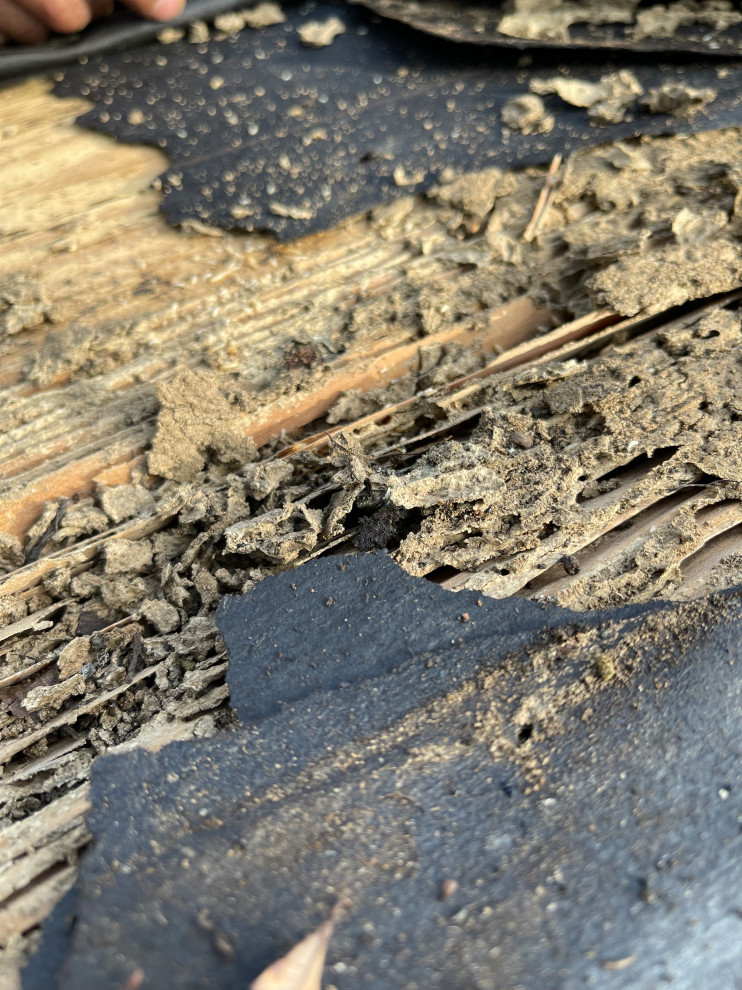
The images above and below are examples of termites damaging the sheathing and rafters on a roof.
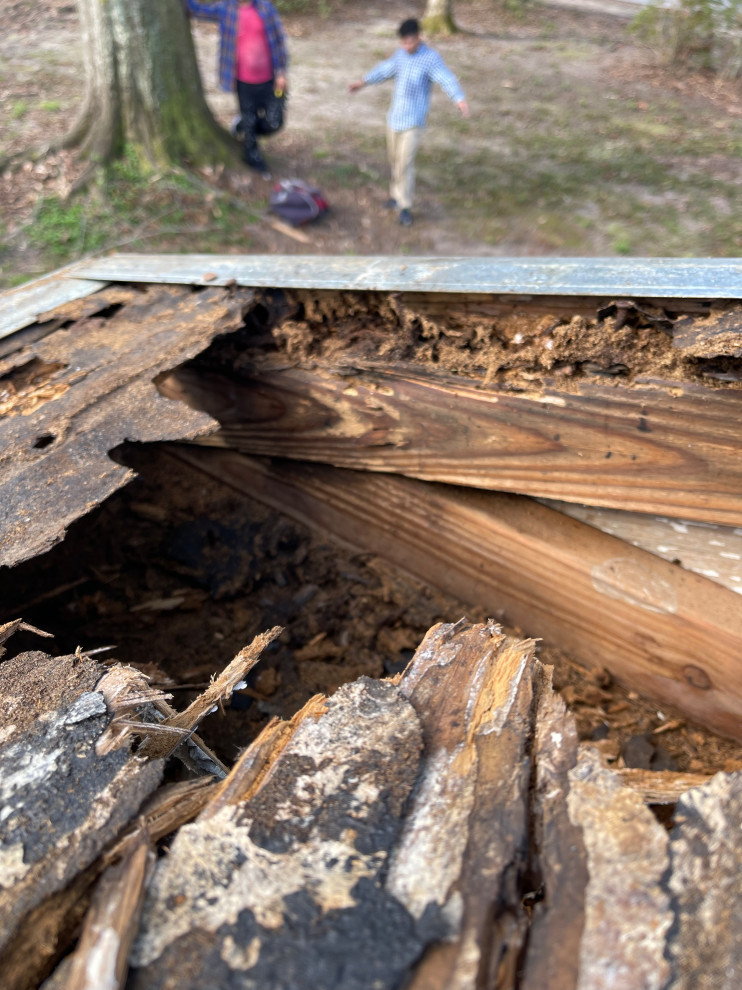
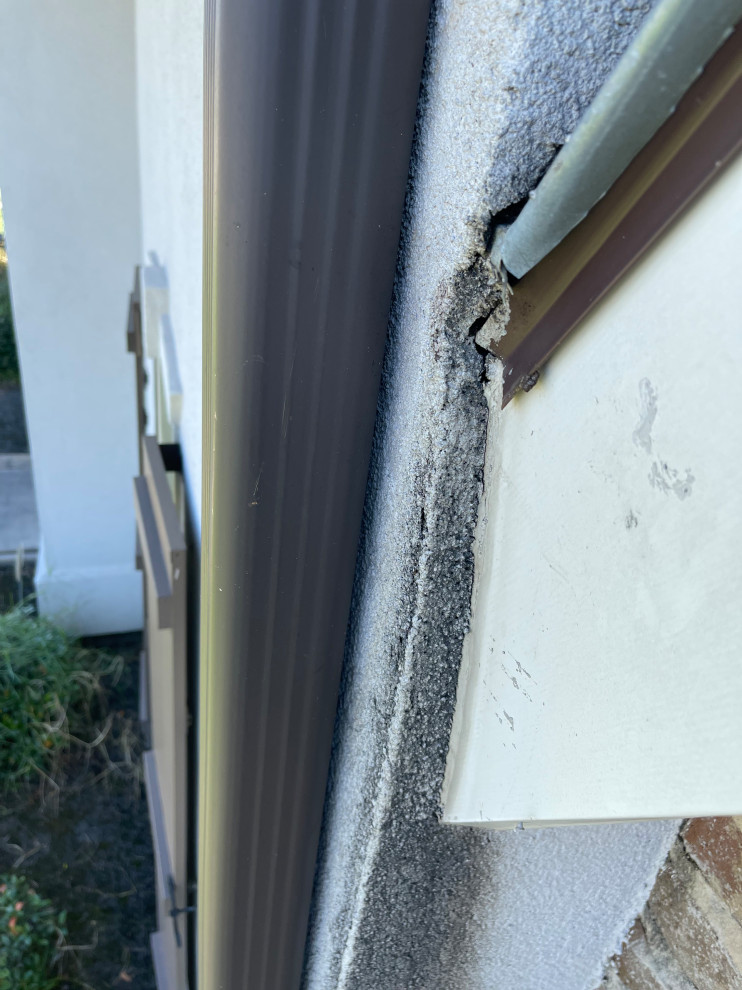
The above image is the location of the water infiltration that gave the termites the moist conditions they needed to survive.
Prevention is Better than Cure: Maintenance Measures
No one wants termites in their home, so it's crucial to take preventative measures. Here are some tips:
- Reduce wood-to-soil contact: Ensure that wooden parts of your home, like porch posts and siding, don't have direct contact with soil.
- Seal cracks and gaps: Regularly inspect your home's foundation and exterior walls, and seal any cracks or gaps you find.
- Maintain proper ventilation: Ensure your home is well-ventilated, especially in crawl spaces and attics, to prevent moisture buildup, which can attract termites.
- Keep wood piles and debris away: Store firewood and other wooden materials away from your home to avoid attracting termites.
Termites? In MY House?! What to Do
So you've found termites in your home, and now you're panicking. Take a deep breath, and follow these steps:
- Don't disturb them: As tempting as it may be, don't try to remove the termites yourself, as this may worsen the infestation.
- Call a professional: It's crucial to get a professional termite inspection and treatment, so contact a licensed pest control company as soon as possible.
The Termite Whisperer: How to Find the Right Professional
Finding the right termite control professional is crucial. Here's what to look for:
- Licensing: Ensure the company is licensed by the Louisiana Department of Agriculture and Forestry.
- Experience: Look for a company with a solid track record in termite control.
- References: Ask for recommendations from friends, family, or online reviews.
- Warranty: A reputable company should offer a warranty on their termite treatments.
Our local pest control provider is Mulkey Pest Control and speak with Scott at (985)345-2935
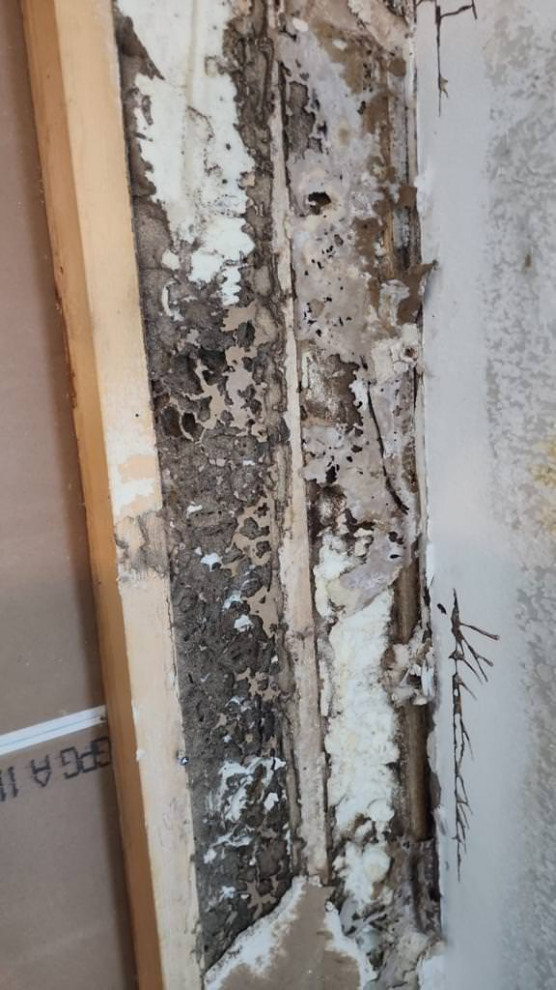
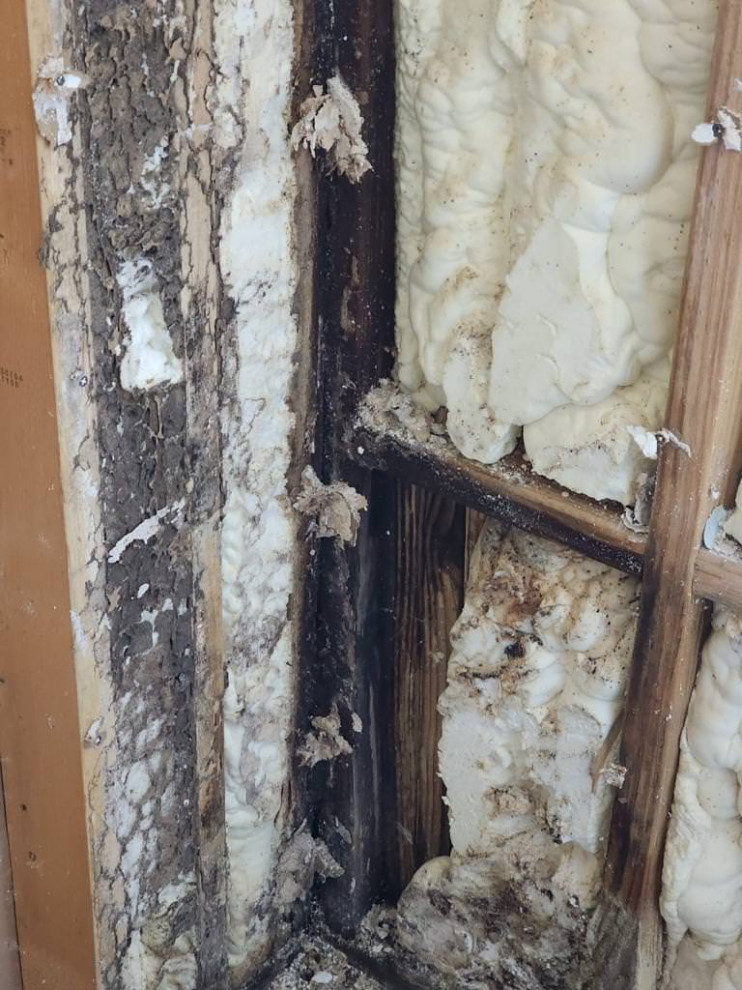
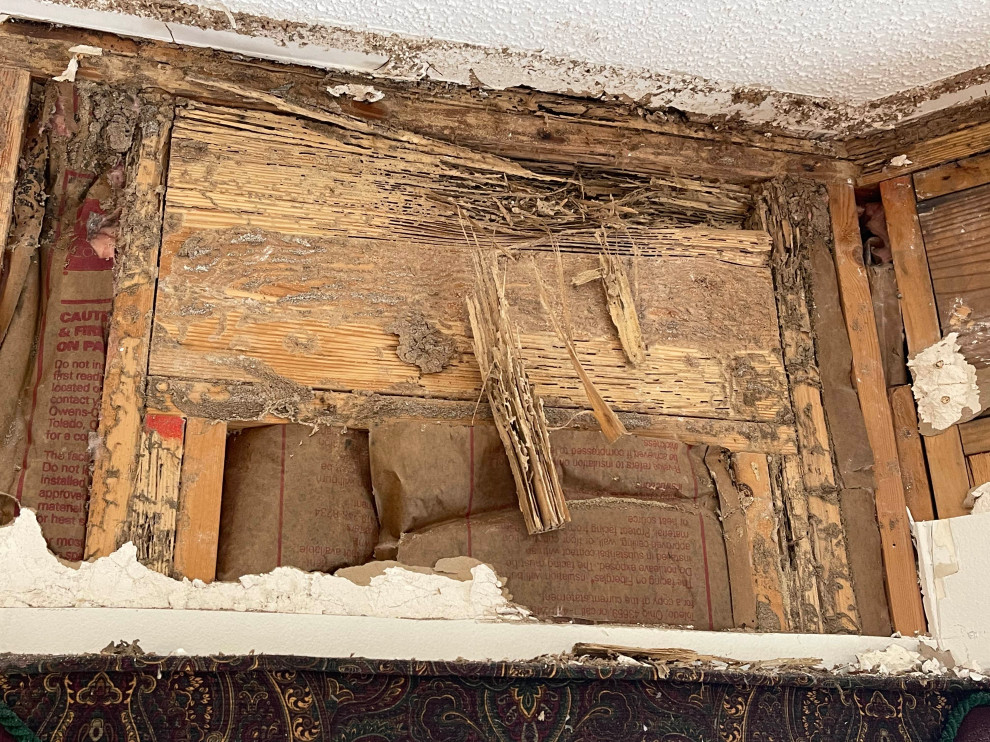
The above photo was found because it looked like dust was near a separate crown molding. Upon further inspection, it looked like saw dust. The crown creaked and sounded hollow to touch. After ripping it off, the worse was found.
The Insurance Conundrum: Is Termite Damage Covered? (Expanded)
In most cases, homeowner's insurance policies in Louisiana do not cover termite damage, as it's considered a maintenance issue. This is because insurance providers typically view termite infestations as a preventable problem that homeowners should take steps to avoid through regular inspections and maintenance.
However, there is a silver lining. Some insurance companies may offer additional coverage for termite damage, known as a termite bond or termite warranty. This is a separate contract between you and a pest control company, which provides protection against future termite infestations and covers the cost of treatment and repairs if termites are found. Here's what you need to know about termite bonds:
- Coverage: Termite bonds can vary in coverage, so it's essential to read the fine print and understand what is included. Some bonds may cover only treatment costs, while others might include repairs for damages caused by termites.
- Cost: The price of a termite bond will depend on various factors, such as the size of your property, the type of construction, and the pest control company you choose. It's wise to get quotes from multiple companies to find the best option for your needs.
- Renewal: Termite bonds typically require annual renewal and may include regular inspections as part of the agreement. This helps to ensure that your home remains termite-free and allows for early detection of any potential infestations.
- Transferability: If you decide to sell your home, a termite bond can often be transferred to the new owner, which can add value and peace of mind for potential buyers.
To determine if termite damage coverage is available through your homeowner's insurance or if a termite bond is right for you, consult with your insurance provider and get quotes from reputable pest control companies. Keep in mind that investing in a termite bond or taking preventive measures to avoid termite infestations can save you from potentially costly repairs in the long run.
